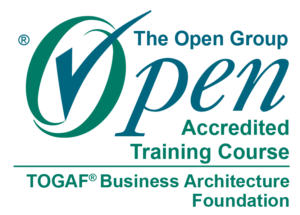TOGAF® Business Architecture Foundation
**Based on the TOGAF® Standard, EA, 10th Edition
In the business sector, business architecture is a discipline that “represents holistic, multidimensional business views of: capabilities, end‐to‐end value delivery, information, and organizational structure; and the relationships among these business views and strategies, products, policies, initiatives, and stakeholders.
In application, business architecture provides a bridge between an enterprise business model and enterprise strategy on one side, and the business functionality of the enterprise on the other side. It often enables the Strategy to Execution methodology.
The business architect role is a strategic one that works at an enterprise level across business units. It facilitates the application of business architecture for business and IT value. It builds and maintains the business architecture knowledgebase and provide input to and assist with the internal business architecture practice.
Enterprise architecture provides a strategic planning framework that relates and aligns information technology with the business functions that it supports. In theory, enterprise architecture teams only perform enterprise technical architecture only but the business Architect role goes way beyond and deals with the business of the enterprise overall.
The purpose of the TOGAF Business Architecture Foundation credential is to provide validation that individuals have knowledge and understanding of Business Modelling, Business Capabilities, TOGAF Business Scenarios, Information Mapping, and Value Streams and how to apply them in development of a Business Architecture based.
 Enterprise
Enterprise 


